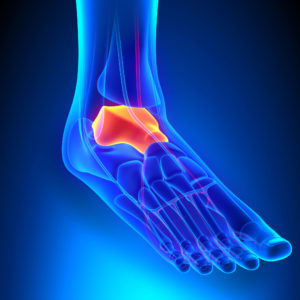 When you hear the initials OCD, you probably assume we’re talking about obsessive compulsive disorder, but there’s another OCD that affects your ankles and feet. We’re talking about osteochondritis dissecans, and it’s a problem that leads to pain and stiffness in your ankle joint. Today, we explain what causes the condition, and what can be done to treat it.
When you hear the initials OCD, you probably assume we’re talking about obsessive compulsive disorder, but there’s another OCD that affects your ankles and feet. We’re talking about osteochondritis dissecans, and it’s a problem that leads to pain and stiffness in your ankle joint. Today, we explain what causes the condition, and what can be done to treat it.
Causes and Symptoms of Osteochondritis Dissecans
The most common cause of osteochondritis dissecans is acute injury to the ankle that results in a chip-type fracture. Oftentimes these fractures occur when a person suffers a severe ankle sprain, but they can also occur if the foot is struck by a strong force. The chip fracture occurs on the talus, a large bone in the back part of the foot that forms the ankle joint. These chip fractures usually occur at the top of the talus or on the side, depending on the way the ankle is sprained.
If, during the acute trauma, the articular cartilage remains in tact, the fragment underneath it is less likely to move and thus has greater healing ability. However, if the cartilage is damaged or broken, the bone chip may shift out of position which can lead to poor healing and more problems down the road. Displaced bones will lose their blood supply and die if not addressed by a foot surgeon.
Symptoms of osteochondritis dissecans are similar to that of a severely sprained ankle and include:
- Pain
- Swelling
- Difficulty putting weight on the ankle
- Discomfort or an odd sensation when moving the ankle joint
Diagnosis and Treatment of Osteochondritis Dissecans
If your symptoms linger longer than expected, or if your ankle injury is severe enough to warrant an X-ray, you’ll head in for imaging tests. OCD is often diagnosed with the help of an X-ray because it can easily reveal that a fragment has chipped off of the larger bone. CT scans or an MRI can also provide a more detailed picture of what’s going on with the talus, but oftentimes an X-ray test will suffice.
Treating the condition comes down to a number of specific factors, like the size of the chip, its stability, if the cartilage is broken and if the doctor believes it can heal without surgery. If the doctor opts for conservative care, they’ll likely pursue a course of immobilization, pain medications and non-weight bearing devices. X-rays will monitor the healing, but if the bone chip isn’t healing as hoped, then surgery may be your only option.
Surgery for osteochondritis dissecans involves removing the bone chip and drilling small holes in the injured bone. The drilling actually allows new blood vessels to forms in the area and help with the healing process. Scar tissue will eventually form in the area and helps the ankle move more easily than if the bone chip remained detached or healed at an odd angle. Surgery can generally be performed using either a minimally invasive method or an open method. Minimally invasive surgery is preferred because it reduces the recovery timetable.